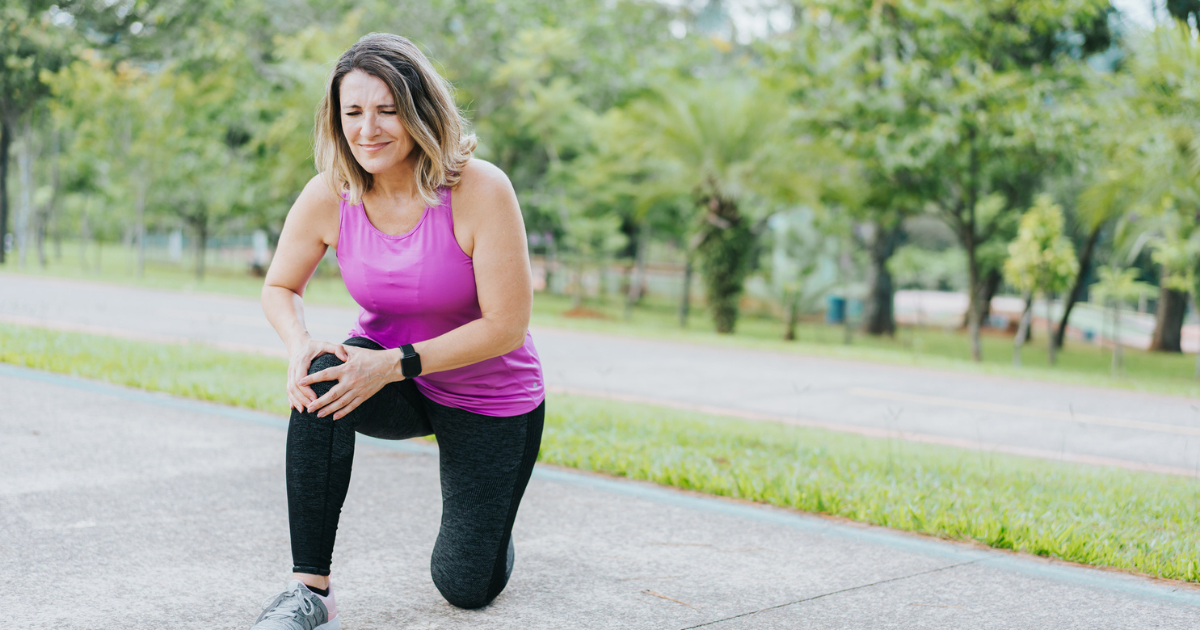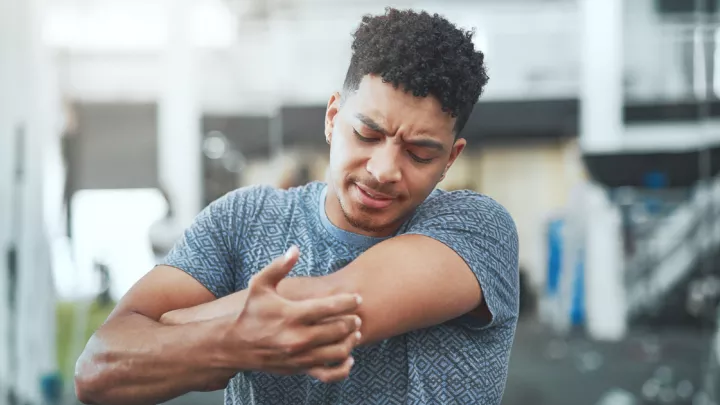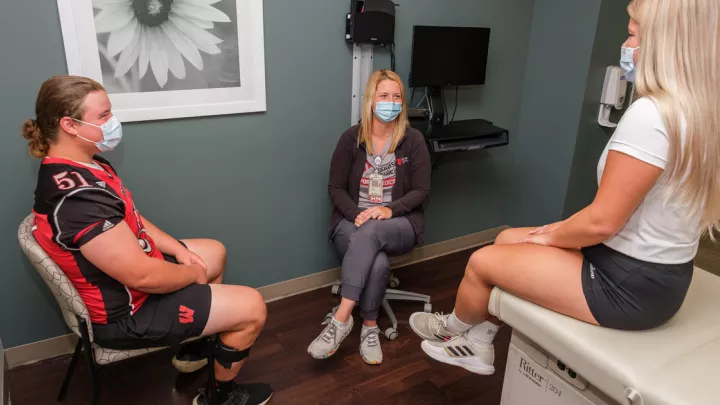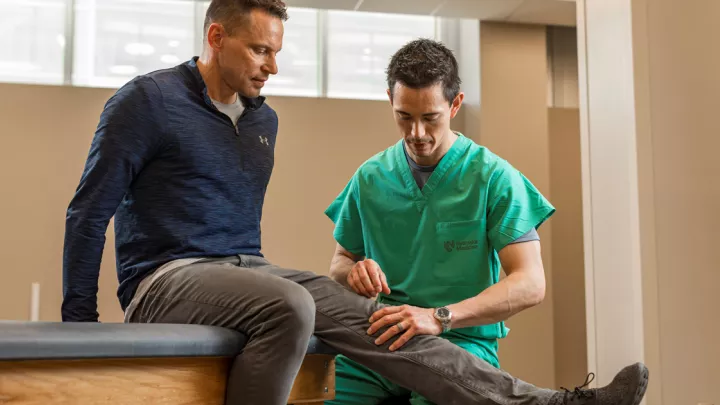How can a torn ACL affect you later in life?

Around 250,000 Americans suffer an anterior cruciate ligament, or ACL, tear each year. Tears are often caused by a sudden twisting motion while playing sports like basketball, soccer or football.
Symptoms of an injured ACL include:
- Pain
- Knee swelling
- Instability
- Inability to continue activity
Treatment may include surgery and physical therapy, depending on the injury and the patient's goals.
What are the long-term effects of an ACL injury?
People who injure their ACL have a higher risk of developing arthritis in their knee, even if they have surgery to repair the damaged ligament.
“The dark side of ACL injuries is the high rate of arthritis down the road,” says orthopedic surgeon Matthew Tao, MD. “Given that many patients who tear their ACLs are in their teens and 20s, the prospect of having an arthritic knee in 10 to 20 years is sobering and has significant implications on their long-term health and quality of life.”
Knee arthritis involves a breakdown of the knee's cartilage and other parts of the knee joint. When other injuries, like meniscus damage, occur with an ACL injury, the chances for arthritis increase.
Impacts of knee arthritis may include:
- Pain
- Poor quality of life
- Inability to fulfill work and life roles
- Higher risk for health conditions like diabetes and heart disease
Physical therapist and researcher Elizabeth Wellsandt, PT, DPT, PhD, OCS, is the director of the UNMC Clinical Movement Analysis Lab, which conducts research on knee injuries. She says arthritis is not the only long-term effect of ACL injury.
“One-third of patients are unable to return to their sport, and overall physical activity is reduced,” she says. “Some patients also gain weight and body fat. Knowing these risks is important to help develop strategies to remain physically active and healthy after an ACL injury.”
Is surgery always necessary?
While ACL tears are often associated with surgery, not everyone chooses that option.
“For people who regularly do cutting or pivoting activities, we typically recommend surgery,” Dr. Tao says. “However, there is good evidence for nonoperative management, and I have had a number of patients go that route.”
A nonsurgical approach to the management of ACL injuries uses physical therapy to:
- Help strengthen the muscles around the knee
- Ensure patients move in a safe and coordinated fashion
What surgical options are available for ACL injuries?
When surgery is required, options include:
- Reconstruction, or using tissue from the patient’s body or a cadaver and repurposing it into a new ACL, with the goal of restoring the original anatomy and stability of the knee
- Repair, or keep the native ACL in place and repair the ends back together. According to Dr. Tao, a new procedure called BEAR uses a biologic collagen implant to help facilitate the healing process, with “good” early results
Dr. Tao cautions that successful recovery from an ACL tear is about more than just the surgery.
“I am a big believer in a multidisciplinary approach to care,” he says. “I tell my patients with ACL injuries upfront that their postoperative rehab is just as important, if not more so, than the surgery itself.”
After ACL surgery
The road to recovery after ACL surgery can be long, and a comprehensive recovery plan is crucial. Early goals include:
- Reducing pain and swelling
- Restoring knee motion and normal walking patterns
- Getting the quadriceps muscle to turn and activate
As recovery progresses, it is important to follow an individualized plan and complete testing to ensure recovery is on track, Dr. Wellsandt says.
“Dr. Tao and I use a team-based approach and return-to-sport testing that includes strength and hop testing, as well as biomechanical and psychological assessments of how the knee is being used during jumping activities. This information is used to develop an individualized plan for each athlete to successfully return to their sports and physical activities,” she says.
The mental aspect of recovery is also critical, Dr. Tao says. When patients want to optimize their mental performance, he refers them to the sports psychology team.
“In the end, patients’ goals differ, but we want to ensure they are getting back to activity as safely and efficiently as possible, which is a true team effort,” he says.
Ongoing research
The Optimizing Movement after ACL Injury study is being conducted by Dr. Wellsandt, Dr. Tao and their team. Eligible participants include people ages 13 to 35 who have torn their ACL and are planning to have or have recently had surgery.
According to Dr. Wellsandt, people with ACL injuries tend to develop patterns of moving that avoid pain by “unloading,” or taking weight off, the injured knee. This can weaken the knee and increase the risk of future injuries.
“Unfortunately, it is common for people to continue to unload their knee even after going back to sports, and these movement patterns have been linked to a higher chance of having a second ACL injury,” Dr. Wellsandt says. “We are developing a rehab approach to help patients relearn how to load their knees during the first months after ACL surgery.”
Participants receive free rehab from physical therapists who are certified in orthopaedic physical therapy and strength and conditioning. The team monitors patients to see if they restore their normal movement patterns and lower their risk for knee arthritis.
If the treatment is successful, Dr. Wellsandt’s team will:
- Share their results globally to implement their physical therapy program into a standard of care for patients after ACL injury
- Further develop clinical treatments after ACL injury to prevent knee arthritis and optimize physical activity and sports participation
Dr. Tao says the study could help identify the drivers for arthritis progression and provide potential targets for therapeutic intervention.
“As a surgeon, I love working with these patients and helping them get back on the field, but I also recognize that there’s a bigger game at play. That’s why the work by Dr. Wellsandt and our team is so important. If we can mitigate issues upfront, we can hopefully affect change down the road, which would be of tremendous benefit to ACL patients and society as a whole.”
If you have a sports-related injury and are interested in seeing our Sports Medicine team, please call 800.922.0000.
If you injured your ACL within the last six months, have had ACL reconstruction in the last month or have a planned ACL construction and are interested in joining the Optimizing Movement after ACL Injury clinical trial, please visit https://net.unmc.edu/ctsearch/study.php?652-21 or call 402.863.9165.







